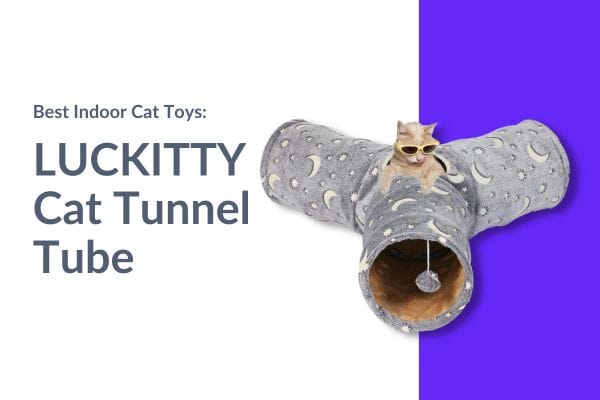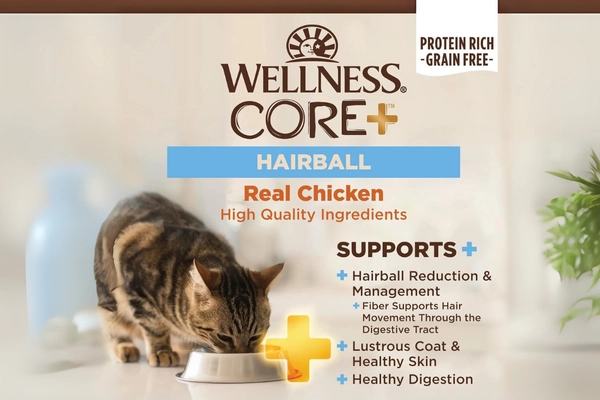Top 7 best eco-friendly cat litters for sensitive cats in 2025. For cat owners, finding the perfect litter can be a challenging task, especially when your feline friend has sensitivities or allergies. Traditional cat litters often contain dust, harsh chemicals, or artificial fragrances that can cause respiratory issues, skin irritation, or paw discomfort in sensitive cats. As awareness of pet health and environmental sustainability grows, the demand for eco-friendly and hypoallergenic cat litters has surged.
In this article, we present the top 7 best eco-friendly cat litters for sensitive cats in 2025. Each product was carefully selected based on hypoallergenic qualities, dust-free formulas, biodegradability, odor control, clumping ability, and of course, excellent user ratings on Amazon.com (minimum 4.5 stars). Our goal is to help you make an informed choice that prioritizes your cat’s health and the planet.
Understanding Cat Sensitivities and Litter
Cats with sensitivities often experience respiratory issues like sneezing or coughing, skin irritations, or paw discomfort due to the litter they use. Common irritants in traditional litters include sodium bentonite clay, artificial fragrances, and chemical additives that create dust and allergens.
Eco-friendly cat litters are made from natural, biodegradable materials such as wood, paper, corn, or wheat. These litters tend to produce less dust, avoid harmful chemicals, and are often hypoallergenic, making them ideal for sensitive cats. Additionally, they help reduce environmental impact by decomposing naturally. According to the American Association of Feline Practitioners (AAFP), choosing hypoallergenic and dust-free litters can significantly improve cats’ respiratory health.
Criteria for Choosing Eco-Friendly Cat Litter for Sensitive Cats
When selecting the best litter for sensitive cats, consider the following:
- Hypoallergenic Properties: The natural cat litter should minimize allergens and irritants.
- Dust-Free: Low or zero dust helps prevent respiratory problems.
- Natural and Biodegradable Materials: Sustainable ingredients like wood pellets, corn, or recycled paper.
- Odor Control: Effective odor management without harsh chemicals.
- Clumping Ability: Clumping litters make cleaning easier and maintain hygiene.
Top 7 Best Eco-Friendly Cat Litters for Sensitive Cats in 2025
Below is a curated list of the best eco-friendly cat litters. All of them are biodegradable
| Product Name | Material | Clumping | Dust Level | Price Range |
|---|---|---|---|---|
| ökocat Natural Wood Clumping Cat Litter | Wood | Yes | Low | $$ |
| sWheat Scoop Natural Wheat Clumping Litter | Wheat | Yes | Low | $$ |
| World’s Best Cat Litter Natural Clumping | Corn | Yes | Low | $$ |
| Feline Pine Original Cat Litter | Pine | No | Very Low | $ |
| Naturally Fresh Cat Litter Ultra Odor Control | Walnut Shell | Yes | Low | $ |
| Fresh News Paper Cat Litter | Recycled Paper | No | Very Low | $ |
| Nature’s Miracle Premium Clumping Corn Cob Litter | Corn Cob | Yes | Low | $$ |
ökocat Natural Wood Clumping Cat Litter
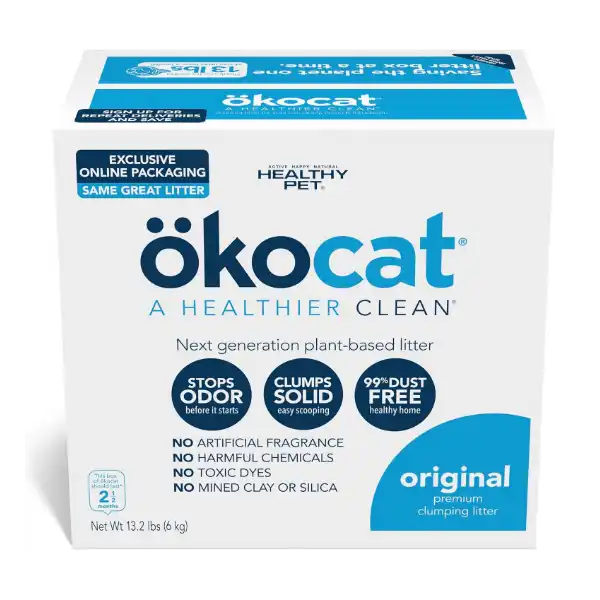
- Material: Wood fibers from reclaimed wood
- Features: 99.9% dust-free, excellent clumping, natural odor control, biodegradable
- Pros: Lightweight, sustainable, great for sensitive cats with respiratory issues
- Cons: Slightly higher price point compared to clay litters
- Price Range: Moderate
sWheat Scoop Natural Wheat Clumping Litter
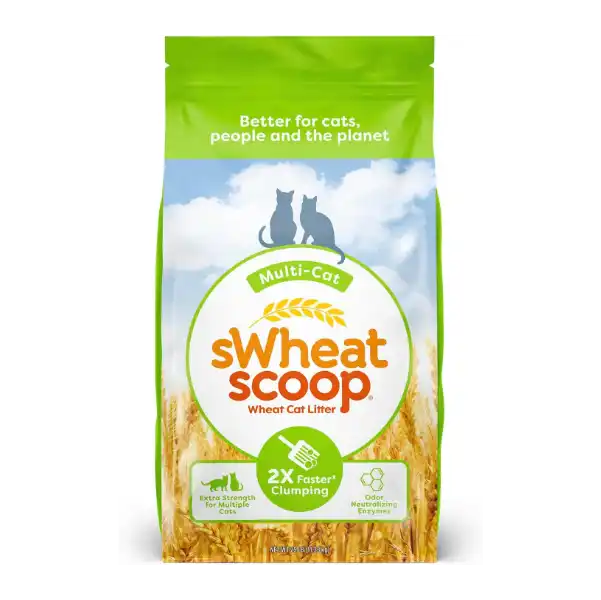
- Material: Wheat
- Features: Biodegradable, flushable, low dust, natural clumping, gentle on paws
- Pros: Good odor control, flushable, environmentally friendly
- Cons: May not clump as hard as clay-based litters
- Price Range: Moderate
World’s Best Cat Litter Natural Clumping
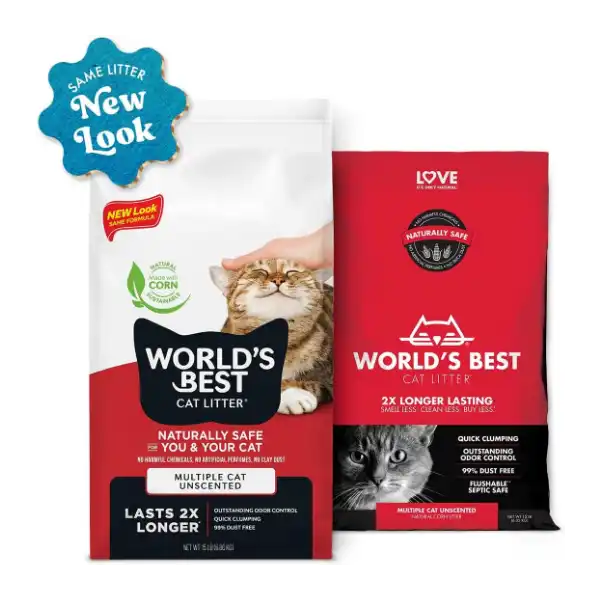
- Material: Whole-kernel corn
- Features: Lightweight, flushable, excellent clumping, low dust
- Pros: Natural odor control, easy to scoop, eco-friendly packaging
- Cons: Some cats may take time to adjust
- Price Range: Moderate
Feline Pine Original Cat Litter
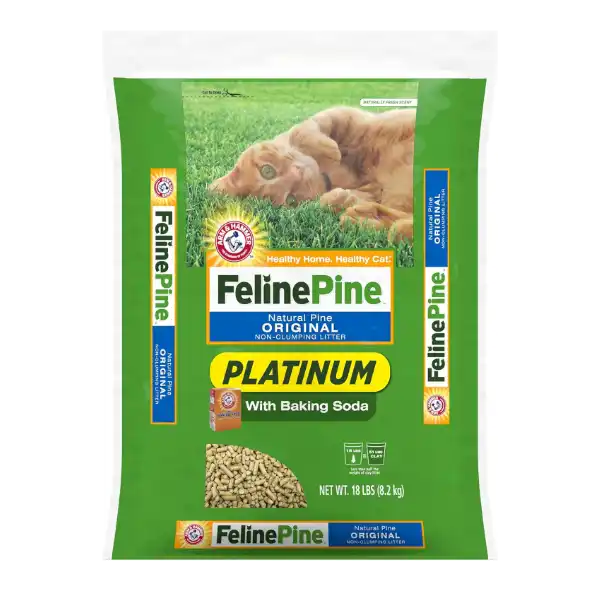
- Material: Pine wood
- Features: Non-clumping, very low dust, natural pine scent, biodegradable
- Pros: Excellent odor control, soft on paws, natural antibacterial properties
- Cons: Non-clumping, may require more frequent cleaning
- Price Range: Budget-friendly
Naturally Fresh Cat Litter Ultra Odor Control
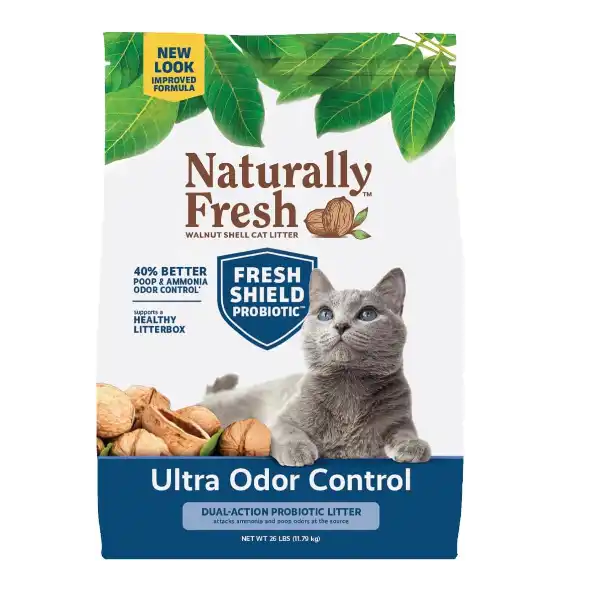
- Material: Walnut shell
- Features: Clumping, low dust, natural odor control, biodegradable
- Pros: Easy to scoop, natural deodorizing, good for sensitive cats
- Cons: Slightly more expensive
- Price Range: Moderate
Fresh News Paper Cat Litter
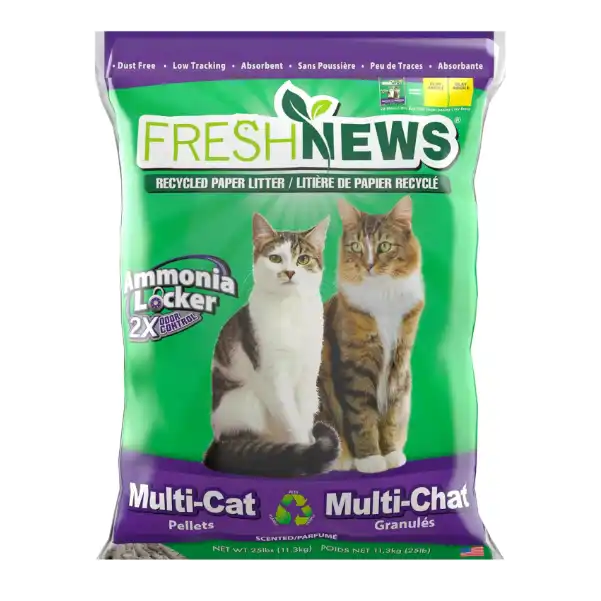
- Material: Recycled paper
- Features: Non-clumping, dust-free, biodegradable, highly absorbent
- Pros: Very gentle on paws, excellent for cats with allergies
- Cons: Needs frequent changing, less odor control
- Price Range: Budget-friendly
Nature’s Miracle Premium Clumping Corn Cob Litter

- Material: Corn cob
- Features: Clumping, low dust, natural odor control, biodegradable
- Pros: Fast clumping, excellent moisture absorption, eco-friendly, gentle on sensitive paws
- Cons: Some cats may need time to adjust to texture
- Price Range: Moderate
How to Transition Your Cat to a New Litter
Switching your cat’s litter should be done gradually to avoid stress or litter box avoidance:
- Mix Old and New:
Start by mixing 25% new litter with 75% old litter. - Gradually Increase:
Over 7-10 days, increase the new litter proportion until fully transitioned. - Observe Behavior:
Watch for signs of discomfort or refusal to use the box. - Maintain Cleanliness:
Keep the litter box clean to encourage use. - Consult Vet: If your cat shows persistent issues, consult a veterinarian. The American Association of Feline Practitioners (AAFP) recommends close monitoring during transitions to prevent stress-related behaviors.
Other Considerations for Sensitive Cats
When caring for sensitive cats, selecting the right litter is only one part of ensuring their comfort and health. Several additional factors play a crucial role in minimizing irritation and promoting well-being.
Litter Box Placement: The location of the litter box significantly impacts your cat’s comfort, especially if they have sensitivities. Choose a quiet, low-traffic area that provides privacy and reduces stress. Proper ventilation is essential to disperse odors and airborne particles, helping to maintain cleaner air quality around the litter box. Avoid placing the box near food bowls or sleeping areas to prevent cross-contamination and discomfort.
Litter Box Hygiene: Maintaining impeccable cleanliness is paramount. Daily scooping and regular full litter changes reduce the buildup of allergens, bacteria, and odors that can exacerbate respiratory or skin sensitivities. Using mild, non-toxic cleaning agents for the box itself helps avoid introducing harsh chemicals that might irritate your cat. Consistent hygiene practices not only improve your cat’s health but also encourage proper litter box use.
Litter Box Type: The design of the litter box can influence dust accumulation and airflow. Covered boxes, while containing odors, often trap dust and limit ventilation, which may aggravate cats with respiratory issues. Open litter boxes promote better airflow and reduce dust concentration, making them generally preferable for sensitive cats. Consider your cat’s preferences as well, since stress related to box type can also impact their overall health.
Diet: Dietary factors can contribute to sensitivities that manifest in skin conditions or digestive issues, which in turn affect litter box habits. Consult your veterinarian to identify any food allergies or intolerances that might be impacting your cat’s health. A balanced, hypoallergenic diet tailored to your cat’s needs can complement your efforts in managing sensitivities related to litter and environment.
Veterinary Consultation: Persistent or severe sensitivity symptoms warrant professional evaluation. Regular veterinary check-ups allow for early detection and management of allergies, respiratory conditions, or skin disorders. Your veterinarian can provide personalized recommendations on litter choices, environmental adjustments, and medical treatments to ensure your cat’s comfort and well-being.
By addressing these factors comprehensively, you create an environment that supports the health of sensitive cats, reduces their discomfort, and enhances their quality of life.
Conclusion
Choosing the right eco-friendly cat litter is essential for sensitive cats’ health and comfort. The 7 options listed above combine sustainability, hypoallergenic properties, and excellent user satisfaction to provide safe and effective solutions for your feline friend.
Investing in a high-quality, natural cat litter not only protects your cat’s respiratory system and skin but also contributes to a healthier environment. Make the switch today and observe the positive impact on your cat’s wellbeing.
For a comprehensive and up-to-date guide on the best cat litters available in 2025, including detailed comparisons and expert recommendations, visit best cat litter updated guide




